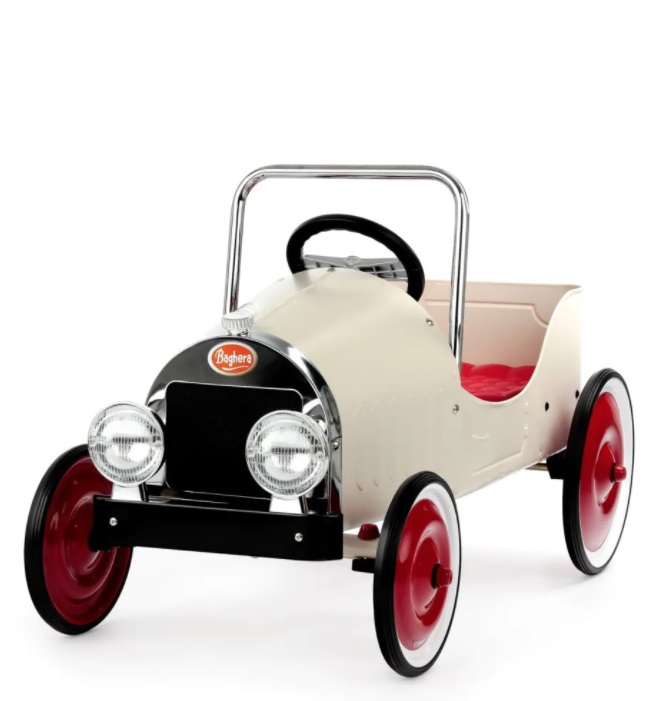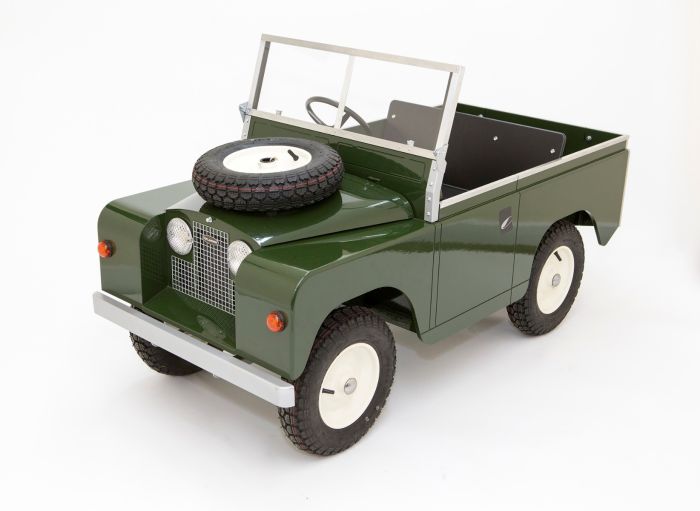Good Tips To Deciding On Ride On Toys
Good Tips To Deciding On Ride On Toys
Blog Article
What Safety Features Of A Ride-On Vehicle Should I Consider? What Are The Advantages And Disadvantages?
Safety features are crucial to think about when selecting the right ride-on vehicle for your child. This will ensure they remain safe during their playing time. Seat Belts are one of the most crucial safety features that you should consider.
Pros They are an excellent method to keep your child safe in their ride-on car. They decrease the likelihood of your child falling out during play or being removed from the car. Seat belts provide an additional layer of protection to your child, especially when there are abrupt stops or abrupt turns.
Cons - Some rides-on-cars do not include seat belts. This is especially true for those that are designed specifically for children. Seat belts are also uncomfortable for children, causing them to be resistant or unwilling to wear them.
Sturdy Construction -
Pros: A sturdy ride-on vehicle with high-quality materials will last longer and is less likely to fail. This will ensure security and reliability. It is durable and stable enough to stand up to the demands of playtime.
Cons - Sturdy construction often costs more at a higher level, which makes it more costly for some families. Furthermore, the heavier materials could affect the portability and maneuverability of the ride-on automobile.
Low Center Of Gravity
Pros: Cars with low centers of gravity are less likely to topple over, which reduces the risk of accidents or injuries. They offer greater stability and more balance, especially during turning and maneuvers.
Pros - Ride-ons that have an unbalanced center of gravity could compromise ground clearance for off-roading capabilities. This can make it difficult for the rider to be flexible.
Remote Control for Parents -
Pros- Ride-on cars that are controlled remotely allow parents to watch and guide their children as playing. This is an added layer of security and safety. Parents can avoid collisions, aid in an emergency, or navigate tricky terrain.
Cons - Remote control for parents could limit children's independence and autonomy as they heavily rely on supervision and guidance from parents while playing. As well, some remote-controlled cars can be more expensive than manual ones.
Speed Limiters
Pros - Ride-on cars with speed limiters or variable speed settings let parents control the speed limit of the vehicle, reducing the risk of accidents or collisions. They can also increase the speed to the max as the child's confidence increases.
Cons - Children may rapidly outgrow their slower speeds. This can lead to disappointment or frustration. Some models may not have speed limiters or require additional features or accessories.
Safe Start Technology -
Pros- Safe start provides smooth stops and starts of the car ride and reduces the chance of abrupt movements or jerks that can frighten children or cause them to lose their balance. It ensures a safer, more comfortable ride.
Cons - Ride-ons equipped with safe-start technology are more expensive. Some children find the gradual acceleration of deceleration to be less interesting than quick stops and starts.
Enhances Visibility -
Pros - Ride-on cars fitted with visible enhancements, such as functioning headlights, reflective materials or taillights improve visibility. This is particularly true in dimly lit environments or conditions. They improve safety as they can make the car more easily visible to other pedestrians or vehicles.
Cons - Visibility enhancements may drain the battery more quickly or create more complexity in the ride-on car's design and increase the chance of maintenance or malfunctions.
By considering these safety features, and weighing their advantages and disadvantages, you can choose the ride-on vehicle that is focused on your child's safety while providing an enjoyable and fun play experience. View the best remote control childrens cars for blog tips including ride of car, electric ride on, electric two seater cars, ride electric car, kids electric cars, electric ride along car, toy cars, car electric ride on, ride on digger, a toy car and more. . 
How Are Models For Children's Cars Designed For Outdoor And Indoor Use?
Outdoors or indoors, children automobiles are designed to be used in different conditions and settings. These models are designed differently: Indoor Use Cars
Size and Weight Size and Weight: Cars designed for indoor usage tend to be lighter, smaller and more maneuverable in small spaces like hallways, living rooms or playrooms. The cars are small enough to fit into narrow spaces and corners and also avoid damaging walls and furniture.
Low Ground clearance: Indoor vehicles are designed with low clearance to allow to prevent getting stuck on rugs, carpets or thresholds. This allows for smooth and uninterrupted movement across indoor surfaces, without the risk of getting stuck or tipping over.
Smooth Wheels. The wheels that are used in indoor use cars can be made out of materials such as rubber or plastic to provide traction. They are designed to minimize noise and avoid scratching indoor surfaces.
Limited Speed - When it comes to indoor use, cars usually have slower speeds than they would be in order to make sure that they can be safely operated and controlled in tight spaces. This will help prevent collisions with walls, furniture or other indoor obstacles.
Outdoor Use Cars -
Durable Construction- Cars which are made for outdoor use are built with robust materials. They can be constructed of tough metal or plastic to withstand elements of the outdoors like temperatures, sunlight, moisture fluctuations as well as rough handling. They are more resistant to wear and tear resulting from exposure to outdoor conditions.
Higher Ground Clearance - Outdoor use cars have higher ground clearance to navigate bumps, uneven terrain or obstacles encountered outdoors. This enables them to navigate rough surfaces like dirt, grass or gravel without becoming trapped or causing damage.
Traction Tires Car tires that are designed for outdoor use usually have treads, or patterns that improve traction and grip when driving on slippery or uneven surfaces. This helps to maintain control and stability while driving on uneven terrain.
Weather Resistance - Outdoor usage vehicles may include weather-resistant elements like sealed electronics, waterproof casings or rust-resistant materials that protect against environmental damages and moisture. They can withstand the elements of rain, mud, or puddles while maintaining performance.
Higher Speed - Outdoor usage cars generally have higher maximum speeds to allow for open spaces and longer distances that are often encountered in outdoor environments. It offers a thrilling adventure for kids who want to explore outdoor spaces.
With these design traits and other features, parents can choose a children's car that best suits their particular requirements for use and the surroundings where they'll utilize it, whether indoors or outside. They can also ensure their child has a safe, fun, and lasting experience. Read the most popular go here on kids cars for blog info including cars pedal car, electric car ride, toy a car, 2 seater electric cars, childs car toy, car on ride, car toy car toy, childrens ride on, toy car toy car, car on ride and more. . 
How Do You Create The Budget For Buying A Ride-On Car For Your Child?
Budgeting for a ride-on car for your child involves taking into account many factors that include quality, durability and long-term use. It is also important to be aware of your financial situation. It is possible to find the most effective price and budget by researching the average price.
Start by comparing the prices of different models. Pricing information is available on the web pages of the manufacturers, online toy stores and retailers.
Find out the essential features you should have
Determine which features are essential for your child's enjoyment and safety. Features such as functioning headlights, realistic sound as well as remote controls for the parents and seat belts may influence the cost of the ride-on vehicle.
Prioritize your features based on your child's preferences and budget restrictions.
Consider Durability and Longevity -
Select ride-on vehicles that are constructed of durable materials such as premium metals or plastics. They can withstand repeated use and outdoor conditions.
To assess the longevity and durability of different models, you can read reviews and ask parents for suggestions. A higher upfront investment in a quality ride-on vehicle could result in savings over the long term because it will not require frequent repairs or replacements.
Compare prices at different retailers
Compare prices across different retailers to find the best value for your money. Check online retailers, local toy stores, department stores and other specialty stores for the most competitive pricing and promotions.
Keep an eye out for any discounts, sales or clearance sales. They will help you get a better deal on your purchases while not sacrificing the quality of your purchases.
Think about additional costs.
It is also important to take into consideration any additional expenses that could be associated with purchasing a kid's ride-on car. These could include transportation, taxes or other accessories, like spare batteries and safety equipment.
Plan the costs of your vehicle, including all accessories or maintenance.
Make a budget that is realistic -
Set a budget that is sensible and reflects your priorities and needs. Think about features, durability and longevity when determining the maximum price you are willing to pay for your ride-on vehicle.
Don't overspend on features which won't make any significant impact on your child's.
Be aware of the long-term value
Evaluate the long-term value of the ride-on kid's car by looking at its longevity, versatility, and ability to adapt with your child. It may be worth investing in a higher-end model that has more features in the long-term.
If you establish a sensible budget and then carefully evaluate the features, durability, and long-term value of each car for your ride-on child You will discover that it is worth your money. When you're on a the budget, focus on aspects that are crucial to your child's safety and enjoyment. Follow the top rated remote control childrens cars kidscars.co.uk tips for blog advice including two seater childrens electric cars, cars pedal car, two seater electric cars, ride on digger, car for toy, toy ride, toy the car, ride electric car, electric toy car, toy cars and more. .